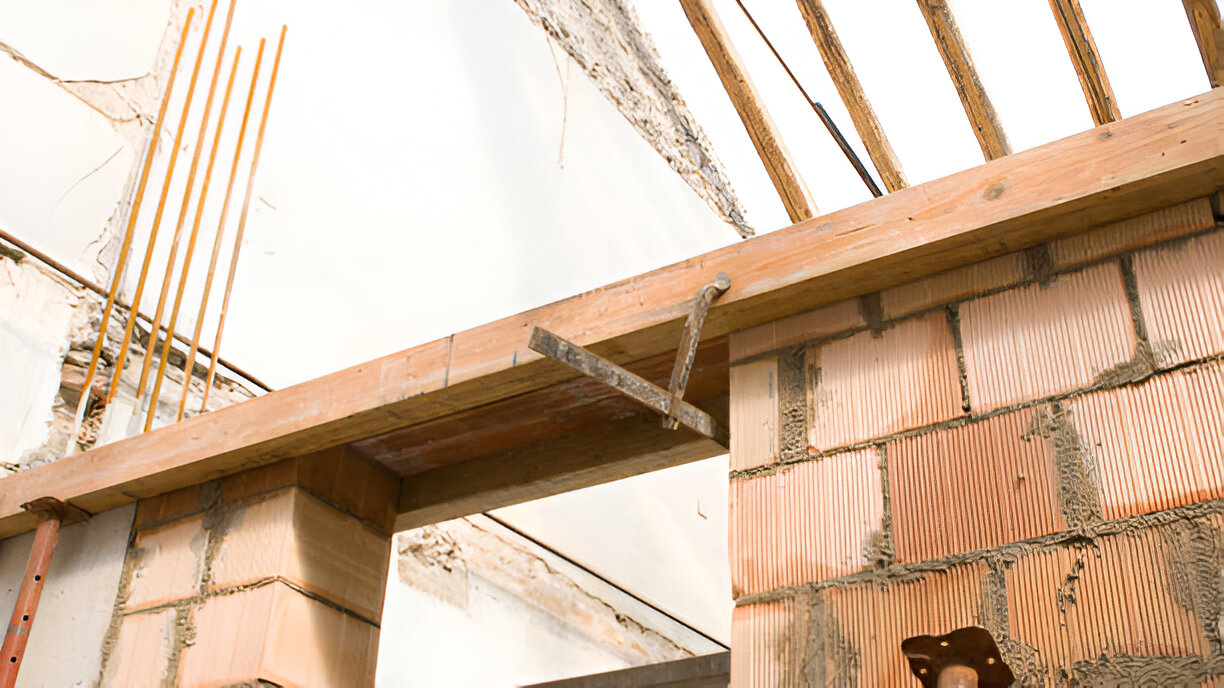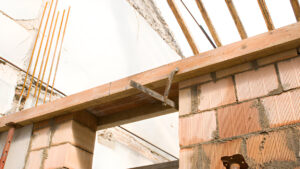
In the ever-evolving world of construction, efficiency and innovation are key drivers of progress. As building projects become more complex and demanding, the industry continuously seeks ways to enhance speed, reduce costs, and ensure safety. One such advancement that has gained significant traction is the use of lightweight formwork. This blog will explore what lightweight formwork is, the different types available, its benefits, and best practices for its use in modern construction projects.
Understanding Lightweight Formwork
Lightweight formwork refers to a formwork system designed to be lighter in weight compared to traditional formwork systems like timber or steel. The primary purpose of formwork is to shape and support concrete until it hardens into the desired structure. Lightweight formwork achieves this while offering several advantages, including easier handling, quicker installation, and reduced labor costs.
Lightweight formwork systems are typically made from materials like aluminum, plastic, or composite materials. These materials are chosen for their strength, durability, and, most importantly, their reduced weight compared to traditional formwork materials.
Key Characteristics of Lightweight Formwork:
- Ease of Handling: Due to its reduced weight, lightweight formwork can be easily moved and positioned by fewer workers, often without the need for heavy machinery.
- Modularity: Lightweight formwork systems are usually modular, meaning they consist of prefabricated panels or components that can be assembled and disassembled quickly and efficiently.
- Reusability: Many lightweight formwork systems are designed for multiple uses, making them cost-effective over time.
- Compatibility: These systems are compatible with various building designs and can be adapted to different structural requirements.
Types of Lightweight Formwork
There are several types of lightweight formwork systems available, each with its specific applications and advantages. Below are some of the most common types:
1. Aluminium Formwork
Aluminium formwork is one of the most widely used lightweight formwork systems. It is known for its high strength-to-weight ratio and durability. Aluminium formwork systems are typically used in high-rise buildings, mass housing projects, and other large-scale construction endeavors.
- Advantages: Aluminium formwork is reusable, easy to handle, and provides a smooth finish to the concrete surface. It is also resistant to corrosion, which extends its lifespan.
2. Plastic Formwork
Plastic formwork is another popular type of lightweight formwork. It is made from high-grade plastic materials and is particularly useful for small to medium-sized projects. Plastic formwork is often used in residential construction, low-rise buildings, and infrastructure projects.
- Advantages: Plastic formwork is extremely lightweight, easy to clean, and reusable. It is also resistant to water and chemicals, making it suitable for projects in harsh environments.
3. Composite Formwork
Composite formwork combines different materials, such as plastic and fiberglass, to create a lightweight and durable formwork system. This type of formwork is versatile and can be used in various construction applications, including bridges, tunnels, and commercial buildings.
- Advantages: Composite formwork offers excellent durability, resistance to corrosion, and a high degree of flexibility in design. It is also reusable and can be customized to meet specific project requirements.
4. Fiberglass Formwork
Fiberglass formwork is another type of lightweight formwork made from reinforced fiberglass materials. It is particularly strong and durable, making it suitable for demanding construction projects.
- Advantages: Fiberglass formwork is lightweight, non-conductive, and resistant to chemicals and extreme weather conditions. It provides a high-quality finish and can be reused multiple times.
Benefits of Lightweight Formwork
The use of lightweight formwork in construction offers numerous benefits that make it an attractive option for modern builders and contractors. Some of the key benefits include:
1. Improved Efficiency
One of the most significant advantages of lightweight formwork is the increased efficiency it brings to the construction process. The reduced weight of the materials allows for quicker assembly and disassembly, which can significantly reduce the overall construction time.
- Faster Construction: Lightweight formwork systems are easier to install and remove, allowing construction teams to complete projects faster and move on to the next phase more quickly.
- Reduced Labor Costs: Because lightweight formwork requires fewer workers for installation and handling, labor costs are reduced. This is particularly beneficial for large-scale projects where labor costs can be a significant portion of the budget.
2. Enhanced Safety
Safety is a top priority on any construction site, and lightweight formwork contributes to a safer working environment.
- Lower Risk of Injuries: The reduced weight of the formwork minimizes the physical strain on workers, lowering the risk of injuries related to heavy lifting and handling.
- Stability and Reliability: Despite being lightweight, these formwork systems are designed to be stable and reliable, ensuring that the concrete structures they support are properly formed and safe.
3. Cost-Effectiveness
While the initial investment in lightweight formwork may be higher than traditional formwork, the long-term cost savings can be substantial.
- Reusability: Many lightweight formwork systems can be reused multiple times, reducing the need for constant replacement and lowering material costs over time.
- Reduced Transportation Costs: Lightweight materials are less expensive to transport, which can lead to significant savings, especially for projects in remote or hard-to-reach locations.
4. Versatility
Lightweight formwork systems are highly versatile and can be adapted to various construction projects.
- Customizable: These systems can be customized to fit different architectural designs and structural requirements, making them suitable for a wide range of applications.
- Compatibility with Modern Techniques: Lightweight formwork is compatible with modern construction techniques, such as prefabrication and modular construction, further enhancing its versatility.
5. Environmental Benefits
Sustainability is an increasingly important consideration in construction, and lightweight formwork offers several environmental benefits.
- Reduced Waste: The reusability of lightweight formwork reduces the amount of waste generated during construction, contributing to more sustainable building practices.
- Lower Carbon Footprint: The reduced weight of the materials means that less energy is required for transportation and handling, which can lower the overall carbon footprint of a construction project.
Best Practices for Using Lightweight Formwork
To maximize the benefits of lightweight formwork, it is essential to follow best practices during its use in construction projects. Here are some key recommendations:
1. Proper Planning and Design
Before starting a project, it is crucial to plan and design the formwork system to ensure it meets the specific requirements of the construction.
- Detailed Planning: Work closely with engineers and architects to design a formwork system that aligns with the project’s structural and aesthetic goals.
- Load Calculations: Ensure that the formwork is capable of supporting the expected loads during the concrete pouring and curing process.
2. Training and Education
Providing proper training to workers who will be handling and installing the lightweight formwork is essential for both safety and efficiency.
- Hands-On Training: Offer hands-on training sessions to familiarize workers with the formwork system and its components.
- Safety Protocols: Emphasize the importance of following safety protocols, including proper lifting techniques and the use of personal protective equipment (PPE).
3. Regular Maintenance and Inspection
To ensure the longevity and effectiveness of the lightweight formwork, regular maintenance and inspections are necessary.
- Routine Inspections: Conduct regular inspections of the formwork components to identify any signs of wear or damage.
- Timely Repairs: Address any issues promptly to prevent accidents or delays during construction.
4. Collaboration with Suppliers
Working closely with formwork suppliers can help ensure that you receive the right materials and support for your project.
- Supplier Support: Choose suppliers who offer technical support and advice throughout the construction process.
- Quality Materials: Ensure that the formwork materials meet industry standards and are of high quality.
Conclusion
Lightweight formwork is revolutionizing the construction industry by offering a more efficient, cost-effective, and environmentally friendly alternative to traditional formwork systems. Whether you’re working on a high-rise building, a bridge, or a residential project, lightweight formwork provides the flexibility, durability, and ease of use needed to meet the demands of modern construction. By understanding the different types of lightweight formwork, recognizing its benefits, and following best practices, builders can optimize their construction processes and achieve better outcomes on their projects. As the industry continues to evolve, lightweight formwork will undoubtedly play a central role in shaping the future of construction.







